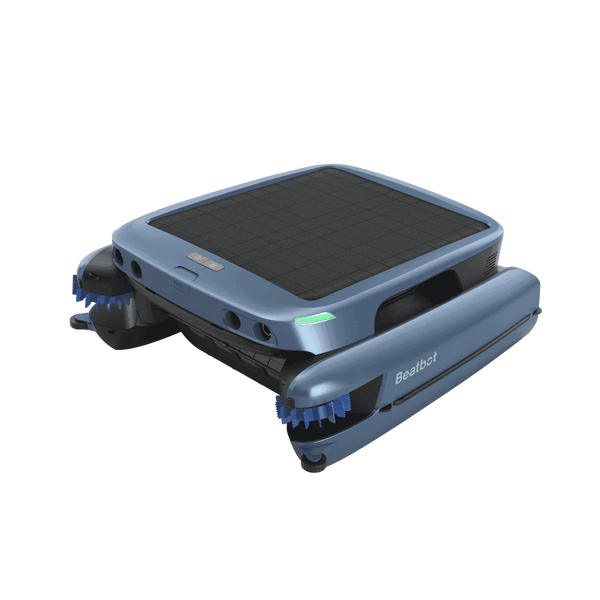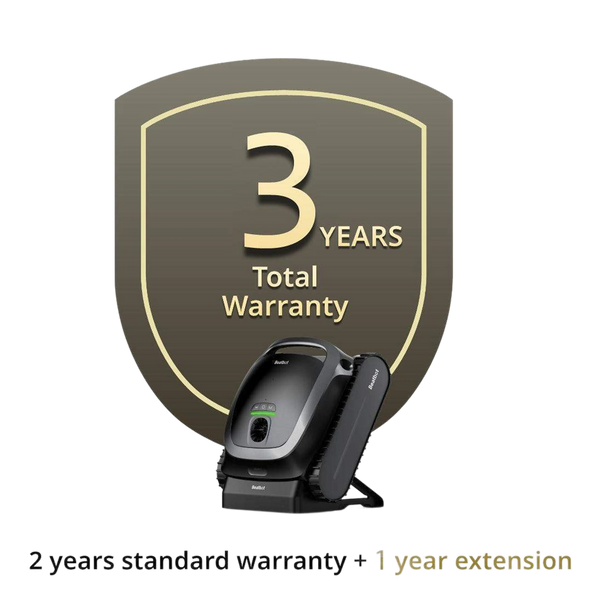How to Clean Algae from Your Pool: A Guide to Using Robotic Pool Cleaners
2024-2-14
Algae spores are constantly introduced into pool water through wind, rain, and even contaminated pool cleaning tools or swimsuits. Favorable conditions for algae growth include warm temperatures, sunlight, imbalanced pool chemicals, and stagnant water. These factors combined create an ideal breeding ground for algae, resulting in rapid proliferation if not addressed promptly. Algae not only compromises the appearance of your pool by turning the water green, murky, and uninviting but can also create slippery surfaces that pose safety risks. Moreover, algae can clog filtration systems, leading to inefficient circulation and filtration, further deteriorating water quality. Effective algae management is crucial for maintaining a healthy swimming environment and ensuring your pool remains inviting and clean.
Table of content
The Role of Robotic Pool Cleaners in Algae Removal
Robotic pool cleaners play a pivotal role in the battle against algae, leveraging advanced technology to ensure comprehensive cleaning. These automated cleaners are designed with sophisticated algorithms that enable them to cover the entire pool surface efficiently, including the floor, walls, and waterline where algae tend to accumulate.
Beatbot's robotic pool cleaners are engineered to tackle algae with precision. Equipped with high-speed rotating brushes, they effectively dislodge algae from surfaces, while powerful suction and fine-mesh filtration systems capture and remove the dislodged spores from the water.
Advanced navigation systems ensure complete coverage of your pool, ensuring no spot is left untouched, including hard-to-reach areas like waterline and corners.

Selecting the Right Robotic Pool Cleaner for Algae Removal
When combating algae, look for a robotic pool cleaner with strong brush action, superior filtration capabilities to capture fine algae spores, and the ability to reach all areas of your pool, including waterline and walls. Users can select their preferred cleaning modes to maintain pool cleanliness, which is crucial for preventing algae buildup.
Step-by-Step Guide to Cleaning Your Pool with a Robotic Cleaner
Step 1. Preparation Through Clearing and Chemical Balancing
Begin by manually removing any large debris such as leaves, twigs, and insects to ensure a smoother operation for the robotic cleaner. Test your pool's water and adjust the chemical levels to the recommended balance.
Step 2. Setting Up the Robotic Cleaner
Gently place your robotic pool vacuum in the water, ensuring it's fully submerged before starting to avoid air pockets that can hinder its performance.
Verify that the cleaner is properly connected to a power source or fully charged, based on its operational design, to guarantee a complete cleaning cycle without interruptions.
Step 3. Selecting and Running the Cleaning Cycle
Pick the cleaning cycle that best suits your pool's current condition. For algae removal or after a storm, consider a more intensive cleaning setting if available.
While the cleaner operates, it's a good practice to occasionally check on its progress to ensure it's covering all areas of the pool and functioning as expected.
Step 4. Post-Cleaning Care and Storage
After the cleaning cycle is complete, remove the robotic vacuum from the pool. Empty and thoroughly rinse its filter basket or bag to remove any trapped debris and algae spores.
Allow your cleaner to air-dry in a shaded area before storing it in a cool, dry place away from direct sunlight and extreme temperatures to prolong its lifespan and maintain optimal performance.
Tips for Preventing Algae Buildup in Your Pool
Regular use of a robotic pool cleaner can significantly reduce the likelihood of algae growth. Additionally, maintaining proper chemical balance, ensuring adequate water circulation, and performing periodic shock treatments will create an environment that's less hospitable to algae.
In addition to regular cleaning with a robotic pool cleaner, optimizing your pool's water circulation through strategic placement of return jets can help prevent algae growth. Use algaecides as part of your regular pool maintenance routine and adjust your pool's chemical balance regularly, especially after heavy rains or extended periods of sunny weather.
Regularly shocking your pool can also help eliminate any developing algae spores before they become a visible problem.
FAQ About Robotic Pool Cleaners and Algae Removal
1. Can robotic pool cleaners remove all types of algae?
Yes, most are designed to handle various algae types, but severe infestations may require initial manual scrubbing.
2. How often should I run my robotic pool cleaner?
For best results, operate your cleaner at least 2-3 times a week, or more frequently in warm weather or after extensive pool use.
Relative Blogs
About the author



















